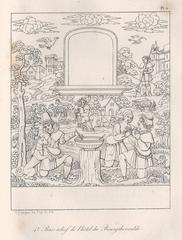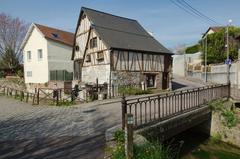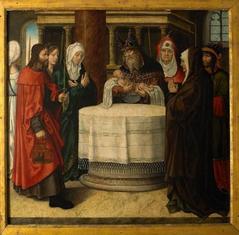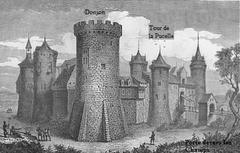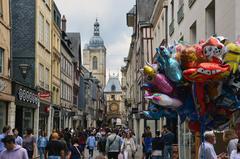Avenue De Caen: Visiting Hours, Tickets, and Attractions in Rouen, France
Date: 04/07/2025
Introduction
Avenue de Caen, located on the left bank of the Seine in Rouen—the historic capital of Normandy—is a vibrant urban artery that bridges the city’s medieval heritage with its industrial present and multicultural character. Named for its orientation toward the city of Caen, this avenue has evolved from an industrial thoroughfare to a lively community hub. It provides easy access to Rouen’s iconic sites, educational institutions, green spaces, and diverse cultural offerings, making it an ideal starting point for both first-time visitors and seasoned explorers. This guide details Avenue de Caen’s history, key attractions, transportation options, and practical tips for a memorable visit (Wikipedia; Normandie Lovers; Choose Normandy).
Table of Contents
- Avenue de Caen: Historical Overview
- Rouen’s Broader Historical Context
- Visiting Avenue de Caen: Practical Information
- Key Sites and Attractions
- Cultural Highlights and Community Life
- Nearby Historical Sites
- Parks, Museums, and Leisure
- Public Transport and Accessibility
- Frequently Asked Questions
- Summary and Visitor Tips
- Sources
Avenue de Caen: Historical Overview
Origins and Urban Expansion
Avenue de Caen takes its name from its orientation toward Caen, following the French tradition of naming roads for their destinations. Established during Rouen’s 19th- and 20th-century expansion, the avenue epitomizes the city’s transformation from a medieval port to a modern industrial center. The left bank, once peripheral, flourished with new residential districts, factories, and educational institutions, with Avenue de Caen as a principal artery facilitating commerce and daily life (Wikipedia).
Role in Industrial and Educational Development
Notably, Avenue de Caen houses the Institut Chimique de Rouen (ICR), founded in 1917 in response to World War I’s demand for chemical expertise. This institution cemented Rouen’s scientific reputation, training generations of engineers and chemists vital to national industrial growth (Wikipedia).
Rouen’s Broader Historical Context
Viking Roots and Medieval Significance
Rouen’s history stretches to Roman times, reaching prominence in the 9th century as the capital of Normandy after Viking settlement. Its medieval prosperity is reflected in landmarks such as the Cathédrale Notre-Dame de Rouen, with Gothic spires immortalized by Monet (justtravelingthru.com; thegoodlifefrance.com).
Industrialization and Recovery
Rouen became France’s third-largest port in the 19th century, with the left bank (including Avenue de Caen) central to industrial expansion. The area was heavily affected by World War II, but post-war reconstruction led to further modernization while preserving historical integrity (justtravelingthru.com).
Visiting Avenue de Caen: Practical Information
- Access: Avenue de Caen is a public thoroughfare, open 24/7.
- Notable Landmarks: Some buildings, such as the Institut Chimique de Rouen, may restrict public entry. Check in advance for guided tours or events.
- Getting There: Served by Rouen’s tramway, buses, and bike-sharing (Lovélo), Avenue de Caen is easily reached from the city center and main train station (Moovit; Visiterouen).
- Best Time to Visit: Spring to autumn for pleasant weather and outdoor events.
Key Sites and Attractions
Institut Chimique de Rouen (ICR)
- Founded: 1917
- Location: 49 Avenue de Caen
- Significance: Center for chemical engineering and scientific innovation
- Access: Generally restricted; inquire for tours (Wikipedia)
Public Transport Infrastructure
- Tramway Station: Elevated station on Avenue de Caen connects to central Rouen (Wikipedia)
Cultural Associations
- The avenue hosts multicultural organizations, art workshops, and community events, enriching Rouen’s urban life (Gralon).
Cultural Highlights and Community Life
Avenue de Caen is renowned for its multicultural vibrancy. Community associations, such as ACAFA (Association Culturelle d’Arts Français et Africains), organize workshops, music events, and cultural festivals throughout the year. The neighborhood’s diversity is reflected in its gastronomy, markets, and family-friendly activities (Choose Normandy).
Nearby Historical Sites
Avenue de Caen provides easy access to Rouen’s most celebrated landmarks:
- Cathédrale Notre-Dame de Rouen: Gothic masterpiece, open daily, free entry, light shows May–September (Normandy Tourism)
- Place du Vieux-Marché & Church of St Joan of Arc: Historic market square, contemporary church, open daily (Try Travel)
- Le Gros-Horloge: 14th-century astronomical clock, open Tues–Sun, ticketed entry
- Abbatiale Saint-Ouen: Gothic abbey, gardens, free entry
- Historial Jeanne d’Arc: Interactive museum, ticketed entry (Try Travel)
- Aître Saint-Maclou: Medieval ossuary with art galleries (Normandie Lovers)
Parks, Museums, and Leisure
- Jardin des Plantes de Rouen: Free botanical garden, open daily
- Square Verdrel: Central public garden
- Seine River Promenade: Walking/cycling paths, boat tours (Travel France Blog)
- Musée des Beaux-Arts: Impressionist and classical art, free permanent exhibits
- Musée Le Secq des Tournelles: Wrought ironwork, housed in a Gothic church
- Cité Immersive Viking: Interactive Viking-themed attraction for families (Try Travel)
Public Transport and Accessibility
Bus, Metro, and Tram
- Astuce network covers Avenue de Caen with buses (lines 27, 530, F1, F9, 33, 41) and trams. Nearest major interchange: Saint-Sever (Moovit; Visiterouen).
River Shuttle and Bike-Sharing
- Calypso river shuttle (free on weekends)
- Lovélo bike-sharing: over 90 stations citywide
Accessibility
- Sidewalks and crossings are adapted for reduced mobility.
- Public transport vehicles and stations (like Saint-Sever) are equipped with ramps and elevators.
Arriving in Rouen
- By Train: Paris Saint-Lazare to Rouen-Rive-Droite (1.5 hours)
- By Car: A13 motorway from Paris (approx. 2 hours)
- By Coach: Direct routes from Paris to Rouen, connections via local transport
Frequently Asked Questions
Is Avenue de Caen free to visit?
Yes, it is a public street with no entrance fee.
Are guided tours available?
Some heritage tours include Avenue de Caen. Check with local tourist offices.
Is parking available?
Limited public parking; public transport is recommended.
Is the area accessible for wheelchairs?
Yes, with adapted sidewalks and public transport.
What is the best way to get around?
Tram, metro, bus, and bike-sharing are all convenient options.
Are there special events on Avenue de Caen?
Look for festivals, markets, and cultural events throughout the year.
Summary and Visitor Tips
Avenue de Caen is an essential part of the Rouen experience, blending industrial heritage, scientific advancement, and contemporary multicultural life. Its strategic position on the left bank provides access to Rouen’s most beautiful historical sites, parks, and cultural venues. The area is well-served by public transport and adapted for visitors with reduced mobility, making it an accessible and practical base from which to explore the city. For up-to-date schedules, guided tour options, and event listings, consult the Audiala app and local tourism resources (Normandy Tourism; Visiterouen; Try Travel).
Sources
- Avenue de Caen in Rouen: Visiting Hours, Tickets, and Historical Guide to Normandy’s Left Bank (Wikipedia)
- Visiting Avenue de Caen in Rouen: Cultural Highlights, Accessibility, and Travel Tips (Choose Normandy)
- Top Historical Sites and Attractions Near Avenue De Caen, Rouen – Visiting Hours & Tickets Guide (Try Travel)
- Transportation and Accessibility in Avenue de Caen, Rouen: Your Guide to Getting Around and Exploring Historical Sites (Moovit; Visiterouen)
- Additional resources: Normandie Lovers, Travel France Blog, Komoot, France Pocket Guide, Daniela Santos Araujo, Mapcarta, France Rent
For real-time updates, downloadable maps, and personalized itineraries, download the Audiala app or visit Rouen’s official tourism website.
